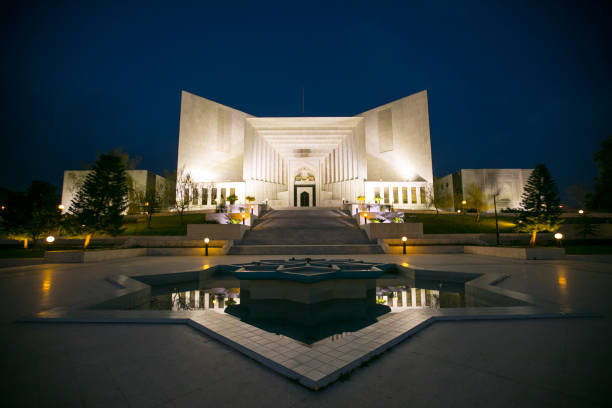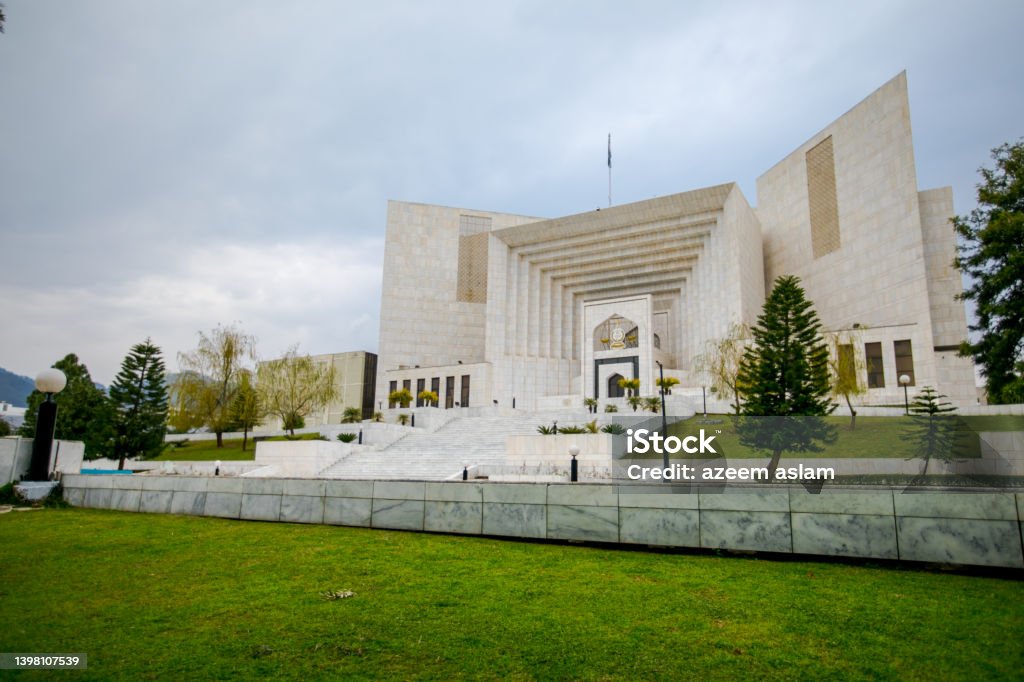Landmark Supreme Court Rulings You Should Know About
The Supreme Court of any country holds the power to define and shape the interpretation of its constitution. In the United States, the Supreme Court has had a profound influence on the legal, political, and social landscape through its rulings. These landmark decisions often extend far beyond the courtroom, affecting everyday lives, public policies, civil rights, and government power. This article explores some of the most significant Supreme Court rulings that every citizen should be aware of, highlighting their background, decisions, and lasting impacts.
1. Marbury v. Madison (1803): Establishing Judicial Review
Background:
In this foundational case, William Marbury petitioned the Supreme Court for a writ of mandamus, forcing Secretary of State James Madison to deliver his commission as a justice of the peace. This came during a political conflict between the outgoing President John Adams and incoming President Thomas Jefferson.
Decision:
Chief Justice John Marshall ruled that the Judiciary Act of 1789, which authorized the Court to issue such writs, was unconstitutional.
Impact:
This case established the principle of judicial review, allowing the Supreme Court to declare laws unconstitutional. It firmly positioned the Court as a co-equal branch of government.
2. Brown v. Board of Education (1954): Ending Racial Segregation in Schools
Background:
This case consolidated several lawsuits challenging racial segregation in public schools. The plaintiffs argued that segregated schools were inherently unequal and violated the Equal Protection Clause of the 14th Amendment.
Decision:
The Court unanimously ruled that “separate but equal” educational facilities for racial minorities and whites were inherently unequal.
Impact:
This landmark ruling overturned Plessy v. Ferguson (1896) and was a turning point in the American civil rights movement. It led to desegregation across the country and inspired broader civil rights reforms.
3. Roe v. Wade (1973): Abortion Rights and Privacy
Background:
A woman under the pseudonym “Jane Roe” challenged Texas laws that criminalized abortion except to save the mother’s life. The case raised questions about women’s rights and bodily autonomy under the Constitution.
Decision:
The Court ruled 7-2 that the constitutional right to privacy included a woman’s right to terminate a pregnancy within the first trimester.
Impact:
Roe v. Wade was a pivotal decision on reproductive rights, shaping decades of debate over abortion laws. It was overturned in 2022 by Dobbs v. Jackson Women’s Health Organization, but it remains a historic case illustrating the power of the Court.

4. Miranda v. Arizona (1966): Miranda Rights
Background:
Ernesto Miranda was convicted based on a confession obtained without being informed of his right to counsel or to remain silent.
Decision:
The Supreme Court held that detained criminal suspects must be informed of their rights before interrogation.
Impact:
This ruling led to the now-famous Miranda warnings: “You have the right to remain silent…” It fundamentally changed law enforcement procedures and reinforced protections under the Fifth and Sixth Amendments.
5. Gideon v. Wainwright (1963): Right to Legal Counsel
Background:
Clarence Gideon was charged with a felony in Florida but was denied a court-appointed lawyer because state law only provided counsel in capital cases.
Decision:
The Court unanimously ruled that the Sixth Amendment’s right to counsel is a fundamental right applicable to the states via the Fourteenth Amendment.
Impact:
This decision guaranteed that all defendants facing serious criminal charges have the right to an attorney, regardless of their financial means.
6. Obergefell v. Hodges (2015): Legalizing Same-Sex Marriage
Background:
This case was brought by same-sex couples challenging state bans on same-sex marriage and the refusal to recognize legal marriages performed in other jurisdictions.
Decision:
The Supreme Court ruled 5-4 that same-sex marriage is a constitutional right under the 14th Amendment’s Equal Protection and Due Process clauses.
Impact:
Obergefell legalized same-sex marriage across the United States, marking a monumental victory for LGBTQ+ rights and civil equality.
7. Citizens United v. FEC (2010): Campaign Finance and Free Speech
Background:
Citizens United challenged restrictions on corporate spending in elections, arguing they violated the First Amendment.
Decision:
The Court ruled that corporate funding of independent political broadcasts in candidate elections cannot be limited under the First Amendment.
Impact:
This controversial decision led to the rise of Super PACs and dramatically increased the influence of money in American politics, sparking ongoing debates about electoral integrity and free speech.
8. Bush v. Gore (2000): Deciding a Presidential Election
Background:
After a contested 2000 presidential election, a recount in Florida was ordered. George W. Bush appealed the decision to the Supreme Court.
Decision:
The Court ruled 5-4 to halt the recount, effectively awarding Florida’s electoral votes to Bush and securing his victory.
Impact:
This decision was criticized for being politically motivated but is notable for its immediate and profound effect: it determined the outcome of a U.S. presidential election.
9. Dred Scott v. Sandford (1857): A Dark Moment in Judicial History
Background:
Dred Scott, an enslaved African American, sued for his freedom, arguing that his residence in a free territory made him a free man.
Decision:
The Court ruled that African Americans, whether enslaved or free, were not U.S. citizens and therefore could not sue in federal court. It also declared the Missouri Compromise unconstitutional.
Impact:
This infamous decision intensified national divisions over slavery and is widely regarded as one of the worst Supreme Court rulings. It was effectively overturned by the Civil War and the 13th and 14th Amendments.

10. United States v. Nixon (1974): Limits of Presidential Power
Background:
During the Watergate scandal, President Richard Nixon refused to release tape recordings, citing executive privilege.
Decision:
The Court unanimously ruled that no person, not even the president, is above the law and ordered Nixon to turn over the tapes.
Impact:
This decision affirmed the principle of checks and balances, ultimately leading to Nixon’s resignation and reinforcing the accountability of the executive branch.
11. Loving v. Virginia (1967): Interracial Marriage Rights
Background:
Richard and Mildred Loving, an interracial couple, were sentenced to a year in prison for violating Virginia’s anti-miscegenation laws.
Decision:
The Court ruled unanimously that laws banning interracial marriage violated the Equal Protection Clause of the 14th Amendment.
Impact:
This historic decision invalidated race-based legal restrictions on marriage and was a major step forward for civil rights and racial equality in America.
12. Korematsu v. United States (1944): Internment Camps During WWII
Background:
Fred Korematsu challenged the constitutionality of internment camps for Japanese-Americans during World War II.
Decision:
The Court upheld the internment as a wartime necessity.
Impact:
This decision has been widely criticized and was formally denounced in later years. In 2018, the Court essentially stated that Korematsu was wrongly decided, although it was never explicitly overturned.
13. New York Times Co. v. United States (1971): The Pentagon Papers
Background:
The Nixon administration tried to block the New York Times and Washington Post from publishing the Pentagon Papers, citing national security concerns.
Decision:
The Court ruled that the government could not exercise prior restraint unless it could prove direct, immediate harm to national security.
Impact:
This landmark First Amendment case affirmed the freedom of the press and limited the government’s ability to censor information, even during wartime.
14. Texas v. Johnson (1989): Flag Burning and Free Speech
Background:
Gregory Lee Johnson was arrested for burning the American flag in protest.
Decision:
The Court ruled 5-4 that flag burning is a form of symbolic speech protected by the First Amendment.
Impact:
This controversial ruling emphasized that freedom of speech includes even offensive or unpopular expressions, reinforcing the robust nature of constitutional speech protections.
15. McCulloch v. Maryland (1819): Federal vs. State Power
Background:
Maryland tried to tax the Second Bank of the United States, arguing that the federal government had overstepped its bounds.
Decision:
The Court ruled that Congress had implied powers under the Necessary and Proper Clause and that states could not tax federal institutions.
Impact:
This decision strengthened federal authority and clarified the relationship between state and national governments.
Why These Rulings Matter Today
Understanding these Supreme Court rulings isn’t just about legal theory — it’s about knowing your rights and how they were won, expanded, or in some cases, restricted. From civil rights to presidential powers, privacy to free speech, each case mentioned above carries lessons for today’s legal landscape.
They show how the Constitution is not a static document but a living framework interpreted and reinterpreted through generations. The judiciary acts as a mirror of societal values, guiding the country through times of moral uncertainty, technological advancement, political crisis, and cultural change.
Conclusion
The Supreme Court’s decisions have long-reaching consequences that shape society, governance, and the lives of citizens. While some rulings are celebrated as triumphs of justice, others are reminders of missteps and the need for ongoing vigilance in protecting rights and freedoms.
For students, lawyers, policymakers, and concerned citizens alike, understanding these landmark cases is essential. They provide insight into the evolving nature of constitutional law and the enduring struggle for equality, liberty, and justice.
